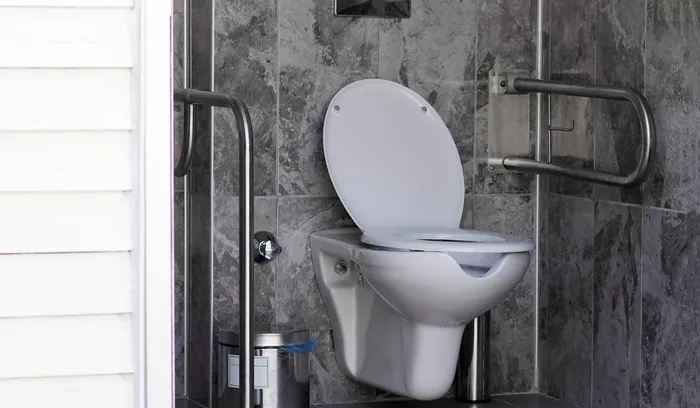Disabled in the hotel
People with disabilities encounter numerous limitations and barriers in public spaces every day. This problem also applies to bathrooms in places such as shopping centers and public buildings, as well as hotels and guesthouses. According to the law, these places must have properly adapted bathrooms. What equipment must they be equipped with to provide a safe and comfortable space for users with mobility issues?

Disabled person in a hotel
Disabled people in a hotel are guests who require special treatment. It is important to provide them with the maximum level of comfort and safety, as well as eliminate the feeling of exclusion. Therefore, many places must be designed in such a way that disabled people in a hotel can move around individual rooms as independently as possible and use the equipment. It is also important to ensure that the service for disabled guests in a hotel can take place in comfortable conditions.
It is important to remember that not every disabled guest in a hotel faces the same limitations. Therefore, when choosing equipment, it is worth considering the adaptation of rooms for the largest possible group of people.
Hotel adapted for disabled people
Adapting a hotel facility to the needs of disabled guests requires planning at the building design stage. Various amenities must be located in the hotel lobby and around the reception area.
A hotel adapted for people with disabilities must have a ramp that allows wheelchair access. In addition, it is necessary to ensure a properly lowered reception desk. It is also important to provide access to appropriate elevators.
A particularly important aspect of adapting hotels for people with disabilities is the proper design and equipment of the bathroom. This is a matter that must be approached with special attention - the toilet is a space where accidents can easily occur. Therefore, a hotel adapted for people with disabilities must have specific equipment and accessories that minimize this risk.
Facilities for people with disabilities in a hotel
Although many issues in this field are regulated by laws, adapting hotels for people with disabilities also involves a number of good practices that - although not required by law - are an important step towards creating a comfortable and safe space. An example of this is the placement of accessories such as handrails and grips in communication corridors.
It is also important to provide facilities for people with disabilities in various rooms in the hotel, such as those who are blind or visually impaired. These include markings using the Braille alphabet. It is also important to use equipment with high contrast colors against the interior background.
However, the key is to equip rooms and bathrooms with specially designed equipment and accessories for people who may have difficulty using "standard" models.
Sanitary facilities for people with disabilities in a hotel
Sanitary facilities for people with disabilities are designed in such a way that people in wheelchairs or with mobility issues can easily use them - both independently and with assistance.
Individual equipment, countertops, and other elements of sanitary facilities for people with disabilities must be at the appropriate height, as specified in regulations. For example, the height for a toilet bowl is approximately 40 cm. This also aims to make it easier for people using wheelchairs or crutches to use them.
Bathroom accessories for people with disabilities in a hotel
The most important hotel bathroom accessories for people with disabilities include:
- Toilet with a special toilet seat,
- bathroom fittings for people with disabilities, preferably touchless,
- handles and handrails,
- tilting mirrors,
- shower seats (preferably foldable),
- threshold-free shower trays,
- touchless soap dispensers and towel or hand dryer holders.
An excellent choice is stainless steel sanitary ware, which stands out for its elegant appearance, easy maintenance, and resistance to damage. When choosing bathroom accessories for people with disabilities, it is important to consider durability, safety, and aesthetics. This will allow for the creation of a truly friendly and comfortable space.
Read also:
Toilet for the disabled - design principles, regulations, guidelines



 Polski
Polski
 Český
Český
 Deutsch
Deutsch
 Spanish
Spanish
 French
French
 Italian
Italian